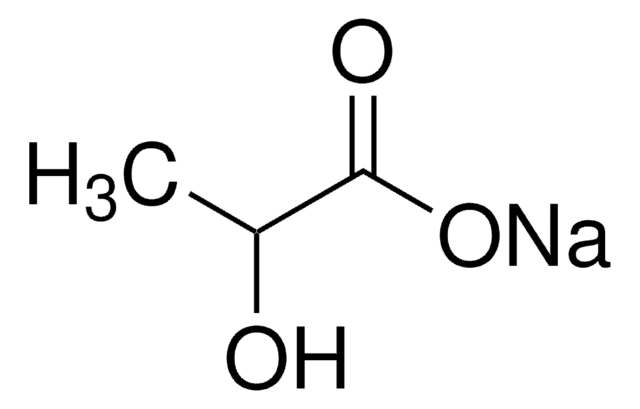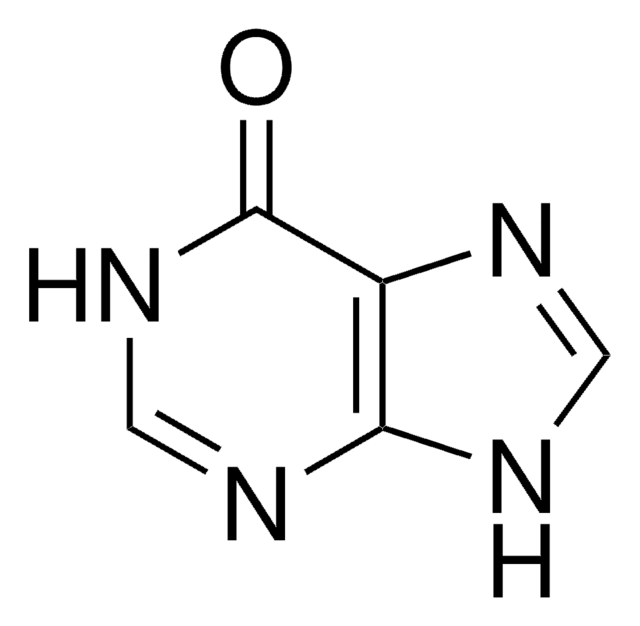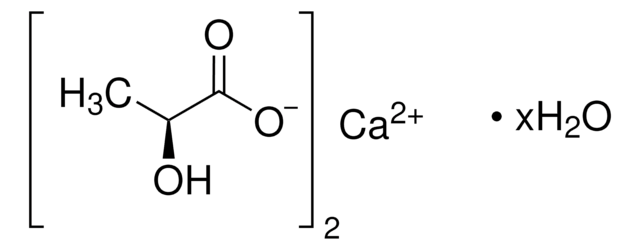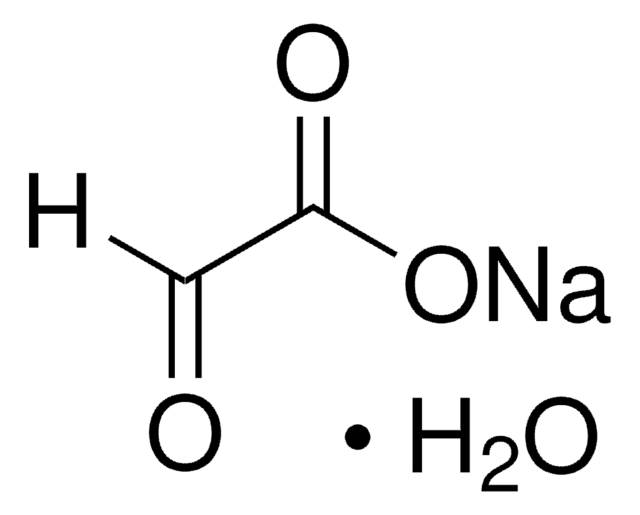P4562
Sodium pyruvate
powder, BioXtra, suitable for mouse embryo cell culture
Synonym(s):
α-Ketopropionic acid sodium salt, 2-Oxopropanoic acid sodium salt, Pyruvic acid sodium salt
Sign Into View Organizational & Contract Pricing
All Photos(4)
About This Item
Linear Formula:
CH3COCOONa
CAS Number:
Molecular Weight:
110.04
Beilstein:
3568341
EC Number:
MDL number:
UNSPSC Code:
12352207
PubChem Substance ID:
NACRES:
NA.75
Recommended Products
product line
BioXtra
Quality Level
Assay
≥99%
form
powder
technique(s)
cell culture | embryo: suitable
mp
>300 °C (lit.)
solubility
H2O: 100 mg/mL
storage temp.
2-8°C
SMILES string
[Na+].CC(=O)C([O-])=O
InChI
1S/C3H4O3.Na/c1-2(4)3(5)6;/h1H3,(H,5,6);/q;+1/p-1
InChI key
DAEPDZWVDSPTHF-UHFFFAOYSA-M
Looking for similar products? Visit Product Comparison Guide
General description
Pyruvate, the end-product of the glycolysis pathway, is the anion of pyruvic acid.
Application
Sodium pyruvate has been used:
- as a supplement in Ca2+ + N-Tris(hydroxymethil)methyl-2-aminoethanesulfonic acid (TES)–NaCl medium for sperm incubation
- as a supplement in TCM-199 hepes modification solution for cumulus-oocytes complexes (COC′s) culture
- as a supplement in Dulbecco′s modified Eagle medium (DMEM) to culture mouse primary hepatocytes (MPHs) and also to intraperitoneally inject fasted mice for glucose production assessment
Biochem/physiol Actions
Sodium pyruvate is mainly used as a constituent in culture broth and media. It exhibits anti-oxidation and anti-inflammatory properties. Hence sodium pyruvate is considered a possible therapy for allergic rhinitis. Sodium pyruvate might also be a new approach treating lactic acidosis.
Sodium pyruvate is used by cells as an easily accessible carbohydrate source. Additionally, it is involved with amino acid metabolism and initiates the Kreb′s cycle. Sodium pyruvate attenuates oxidative stress in vitro. The 100 mM solution should be diluted at 1:100 for most cell culture applications. This product has been qualified for use in mouse embryo cultures.
Signal Word
Warning
Hazard Statements
Precautionary Statements
Hazard Classifications
Eye Irrit. 2 - Skin Sens. 1B
Storage Class Code
13 - Non Combustible Solids
WGK
WGK 1
Flash Point(F)
Not applicable
Flash Point(C)
Not applicable
Personal Protective Equipment
dust mask type N95 (US), Eyeshields, Gloves
Choose from one of the most recent versions:
Already Own This Product?
Find documentation for the products that you have recently purchased in the Document Library.
Customers Also Viewed
Jing Yang et al.
Artificial cells, nanomedicine, and biotechnology, 44(1), 48-55 (2014-04-05)
To examine the effects of sodium pyruvate (SP) on metabolic acidosis. For the in vivo experiments, we evaluated effects of SP on an ammonium chloride (NH4Cl)-induced hyperchloremic acidosis rat model. SP was infused at overall doses of 2, 4, and
Maheul Ploton et al.
Journal of hepatology, 69(5), 1099-1109 (2018-07-08)
Embedded into a complex signaling network that coordinates glucose uptake, usage and production, the nuclear bile acid receptor FXR is expressed in several glucose-processing organs including the liver. Hepatic gluconeogenesis is controlled through allosteric regulation of gluconeogenic enzymes and by
Rekin's Janky et al.
PLoS computational biology, 10(7), e1003731-e1003731 (2014-07-25)
Identifying master regulators of biological processes and mapping their downstream gene networks are key challenges in systems biology. We developed a computational method, called iRegulon, to reverse-engineer the transcriptional regulatory network underlying a co-expressed gene set using cis-regulatory sequence analysis.
Lotta Tengroth et al.
PloS one, 9(6), e98239-e98239 (2014-06-03)
The human nasal epithelium is an important physical barrier, and a part of the innate immune defense that protect against pathogens. The epithelial cells recognize microbial components by pattern-recognition receptors (PRRs), and thereby trigger an immune response. Even though TLR3
Yoh Arita et al.
Nature communications, 5, 4552-4552 (2014-07-30)
The origin and developmental mechanisms underlying coronary vessels are not fully elucidated. Here we show that myocardium-derived angiopoietin-1 (Ang1) is essential for coronary vein formation in the developing heart. Cardiomyocyte-specific Ang1 deletion results in defective formation of the subepicardial coronary
Our team of scientists has experience in all areas of research including Life Science, Material Science, Chemical Synthesis, Chromatography, Analytical and many others.
Contact Technical Service









